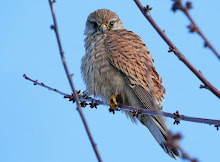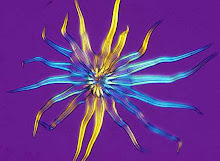The rain might be lashing down outside but there's still plenty of wildlife to track down much closer to home. Unless your house is hermetically sealed and doused in deadly chemical cleaning agents, any or all of these could be lurking in the shadows.
If you settle down to read a good book and the punctuation seems to be moving around, then you could be looking at one of these tiny booklice. They are not much bigger that a full stop and feed on fungi that grow on damp paper, and also eat the glue that holds the pages together. Old damp paperbacks are prime habitat but they also like nothing better that feeding on wallpaper paste behind loose wallpaper. If your wallpaper makes clicking noises, it may be because they are headbutting it during their courtship.
Silverfish. You might have these most ancient of insects, that move like greased lightning, in a damp corner of a kitchen cupboard where they like to feed on starchy foods like flour.
Silverfish Lepisma saccharina are covered in tiny scales that rub-off easily, making it easier for them to wriggle out of the grip of a predator - which might go some way to explaining why they've been around for 400 million years.
This is the firebrat, the silverfish's larger and hairier cousin. It likes warmer conditions and used to be common in bakeries. Give yourself a pat on the back if you provide a home for these - they are not very common.
And finally, the daddy long-legs spider Pholcus phalangioides. Whatever you do, don't throw these out of the house as they can't survive anywhere else. They are humans' constant companions, only ever found inside our homes and outbuildings in our northern latitudes. They are useful to have around, preying on other household invertebrates - even on the fearsome house spider that comes into our homes during cold weather. This daddy long-legs spider is showing her maternal instincts by carrying her eggs around in her jaws.













































